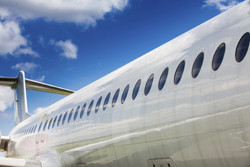Faster and cheaper fuselage development
Reflecting the spirit and value of teamwork, a huge international consortium of 57 partners from 18 countries launched the EU-funded project 'More affordable aircraft structure through extended, integrated, and mature numerical sizing' (MAAXIMUS). The team set out to enable faster development and right-first-time structure of a highly optimised composite fuselage. Among the areas for improvement are single one-shot assembly, adaptation of assembly line processes to composite properties, better confidence levels and shorter cycle times of simulations. The technologies are predicted to reduce development time and cost by 20 % and 10 %, respectively. They will slash assembly time in half and reduce production costs and weight by 10 %. During the project's sixth of its eight years, researchers continued to improve multi-criteria optimisation techniques with advances to a simplified acoustic model, the composites data model and consideration of non-destructive investigation (NDI) data. The team also completed the cost model based on a parameterised generic fuselage. In parallel, the team finished up most of the design work on structural subcomponents for physical testing and the simulations of manufacturing processes. The manufacturing test coupons have already been used in comparison of experimental and calculated results, and all the NDI defects data at the coupon level are available. Perhaps the largest component of the MAAXIMUS project deals with simulating composite material behaviours during damage initiation, propagation and final failure. Extensive and comprehensive work has focused on the development of models considering damage from the micro scale to the barrel scale, with proper coupling between scales and careful control of the error in the solution. Reducing uncertainty plays a critical role in reducing redundancy, which translates to reductions in weight, cost and time. A new test rig for large structural components will eliminate the need for a barrel test for certification. MAAXIMUS is nearing the finish line with final months to be devoted to full-scale validation of simulation methods and test procedures. Successful completion will put powerful tools in the hands of aircraft manufacturers, supporting them in efforts to significantly reduce the time and cost of development and assembly of composite aircraft fuselages.
Keywords
Fuselage, composites, aircraft, simulation-based design

